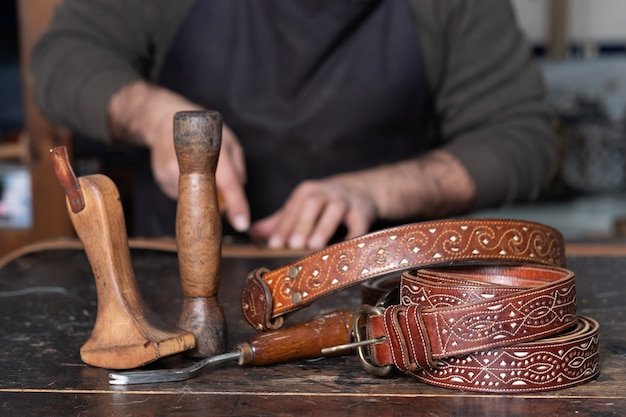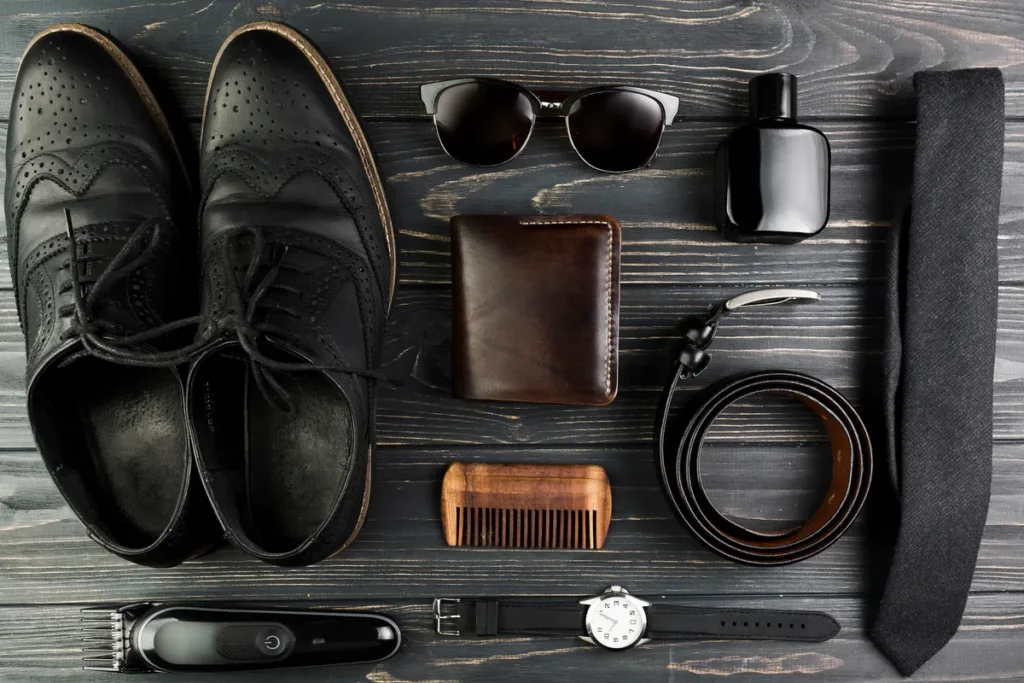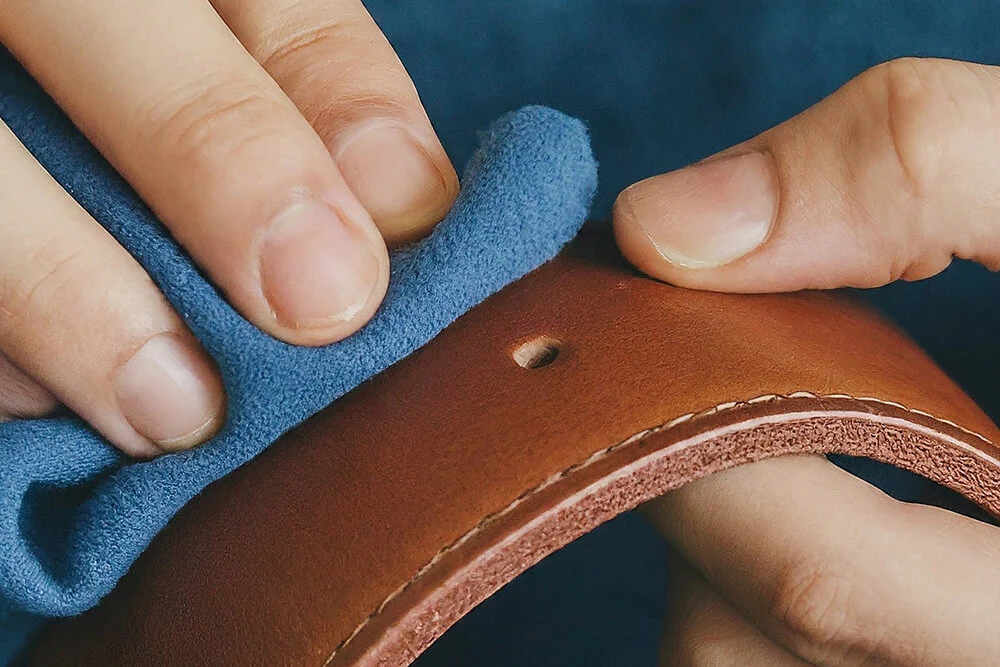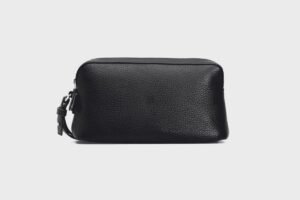Care Tips for Maintaining Leather Belts and Accessories
Leather belts and accessories are a staple in many wardrobes, valued for their classic appeal and long-lasting nature. Proper care routines are important to maintain their condition and prolong their life. From cleaning to conditioning and storage, small efforts can keep your leather items looking their best for years. This guide will walk you through practical care tips for leather products, ensuring they remain functional and stylish.
Cleaning Leather Belts
Cleaning leather belts regularly prevents dirt, sweat, and oils from building up, which can degrade the material over time. Whether you wear your belt daily or only on special occasions, a simple cleaning routine can make a big difference in its appearance and durability. Cleaning leather becomes an easy and rewarding process with the right methods and tools.
Steps to Clean Your Leather Belt
- Dust and Debris Removal: Start by wiping your belt with a soft, dry cloth to remove loose dirt. This prevents small particles from scratching the surface during deeper cleaning.
- Gentle Cleaning: Dampen a cloth with lukewarm water for minor stains and carefully clean the affected area. Avoid soaking the leather, as excess water can cause damage.
- Using Soap Solutions: Mix a small amount of mild soap with water to create a gentle cleaning solution. Apply it sparingly with a soft cloth, then dry the belt immediately with a clean towel.

Conditioning Leather Products
Leather naturally loses moisture over time, leading to cracks and stiffness. Conditioning restores its oils and keeps the material soft and pliable. Regular conditioning is a key aspect of leather care, ensuring belts and accessories stay in excellent shape even with frequent use.
How to Condition Leather
- Choose the Right Product: Look for leather-specific conditioners free of harsh chemicals or alcohol. These are designed to nourish the material without causing harm.
- Test First: Always test the conditioner on a small, inconspicuous area to check for color changes.
- Application: Use a soft cloth to apply a small amount of conditioner in circular motions. Allow it to absorb fully before buffing it with a clean cloth.
Conditioning your leather every three to six months can significantly affect its longevity and overall appearance.
Protecting Leather Accessories
Preventive measures can help protect leather accessories from damage caused by daily wear and environmental factors. If left unchecked, exposure to sunlight, moisture, and dirt can quickly degrade leather. Taking simple precautions ensures your leather items stay resilient and attractive.
Effective Ways to Protect Leather
- Shield from Sunlight: Direct sunlight can fade leather and dry it out, leading to cracks. Store your accessories in a cool, shaded space when not in use.
- Guard Against Moisture: Leather is sensitive to water, which can leave stains and cause shrinkage. If your accessory gets wet, pat it dry with a soft cloth and let it air-dry naturally.
- Apply a Leather Protector: Use a quality leather protector spray or cream to create a barrier against stains, dirt, and water.

Proper Storage of Leather Belts and Accessories
How you store your leather items plays a crucial role in their preservation. Improper storage can lead to creases, discoloration, or even mold growth. Good storage practices keep your belts and accessories in top condition, ready for use whenever needed.
Storage Tips to Follow
- Avoid Folding: Instead of folding belts, store them flat or roll them loosely to prevent permanent creases.
- Use Fabric Covers: For smaller accessories, fabric dust bags protect against scratches and dust.
- Keep in a Dry Place: Avoid damp storage areas to prevent mold or mildew. Adding silica gel packs to your storage can help control humidity levels.
Proper storage routines protect the leather from physical damage and help preserve its original color and texture.
Addressing Common Leather Problems
Despite the best care, leather products may develop minor issues over time, such as scratches, discoloration, or stiffness. Knowing how to handle these problems ensures your belts and accessories retain charm and usability.
Simple Fixes for Leather Issues
- Scratches: Gently rub the affected area with your finger for small scratches. Natural oils from your skin can sometimes help blend the scratch into the leather. Deeper scratches may require a leather balm in a matching color.
- Discoloration: Use leather dye or polish to restore the original shade. Always test the product on a hidden area before full application.
- Stiffness: Apply a small amount of leather conditioner to soften the material and restore flexibility.
With prompt attention, most leather problems can be resolved, allowing your items to look and function like new.
Long-Term Leather Maintenance
Consistency is the key to preserving leather over the long term. By incorporating simple care habits into your routine, you can enjoy your leather products for years to come. Regular cleaning, conditioning, and protection form the backbone of effective leather care.
Recommended Maintenance Routine
- Monthly Cleaning: Wipe down your leather items monthly to remove dust and dirt.
- Seasonal Conditioning: Condition your leather every three to six months, depending on how often the items are used.
- Annual Inspection: Check for signs of wear, such as cracks or discoloration, and address them promptly to prevent further damage.
Adopting a structured maintenance routine ensures your leather belts and accessories remain a reliable part of your wardrobe.
Final Thoughts
Leather belts and accessories are investments that, with proper care, can last a lifetime. From cleaning and conditioning to storage and protection, following these practical tips helps maintain their quality and appeal. Taking the time to care for your leather preserves its functionality and keeps it looking timeless and elegant. Start applying these methods today to ensure your leather products continue to serve you well for years ahead.









Add comment